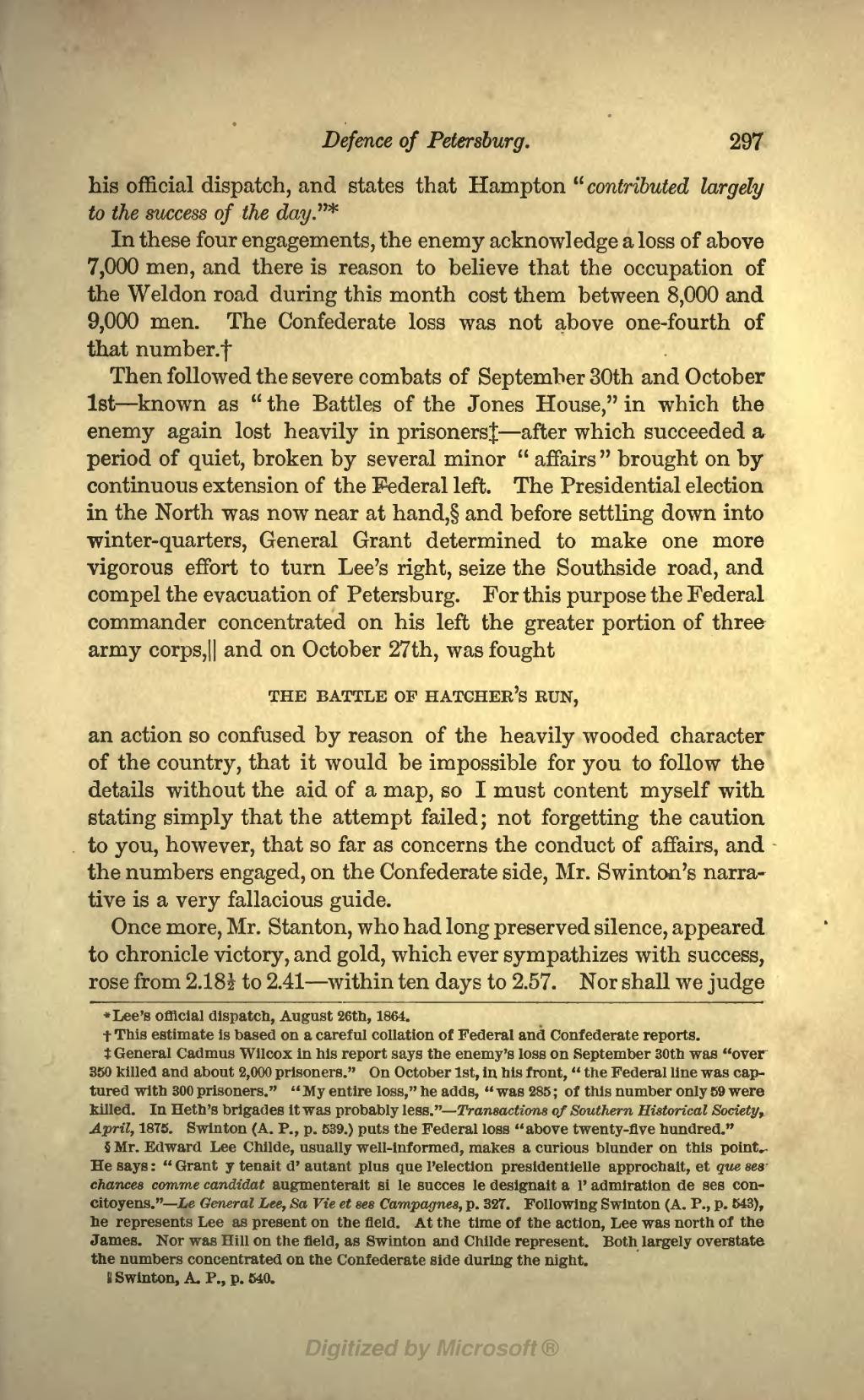his official dispatch, and states that Hampton "contributed largely to the success of the day"[1]
In these four engagements, the enemy acknowledge a loss of above 7,000 men, and there is reason to believe that the occupation of the Weldon road during this month cost them between 8,000 and 9,000 men. The Confederate loss was not above one-fourth of that number.[2]
Then followed the severe combats of September 30th and October 1st—known as "the Battles of the Jones House," in which the enemy again lost heavily in prisoners[3]—after which succeeded a period of quiet, broken by several minor "affairs" brought on by continuous extension of the Federal left. The Presidential election in the North was now near at hand,[4] and before settling down into winter-quarters, General Grant determined to make one more vigorous effort to turn Lee's right, seize the Southside road, and compel the evacuation of Petersburg. For this purpose the Federal commander concentrated on his left the greater portion of three army corps,[5] and on October 27th, was fought
THE BATTLE OF HATCHER'S RUN,
an action so confused by reason of the heavily wooded character of the country, that it would be impossible for you to follow the details without the aid of a map, so I must content myself with stating simply that the attempt failed; not forgetting the caution to you, however, that so far as concerns the conduct of affairs, and the numbers engaged, on the Confederate side, Mr. Swinton's narrative is a very fallacious guide.
Once more, Mr. Stanton, who had long preserved silence, appeared to chronicle victory, and gold, which ever sympathizes with success, rose from 2.18½ to 2.41—within ten days to 2.57. Nor shall we judge
- ↑ Lee's official dispatch, August 26th, 1864.
- ↑ This estimate is based on a careful collation of Federal and Confederate reports.
- ↑ General Cadmus Wilcox in his report says the enemy's loss on September 30th was "over 350 killed and about 2,000 prisoners." On October 1st, in his front, "the Federal line was captured with 300 prisoners." " My entire loss," he adds, "was 285; of this number only 59 were killed. In Heth's brigades it was probably less."—Transactions of Southern Historical Society, April, 1875. Swinton (A. P., p. 539.) puts the Federal loss "above twenty-five hundred."
- ↑ Mr. Edward Lee Childe, usually well-informed, makes a curious blunder on this point. He says: "Grant y tenait d'autant plus que l'election presidentielle approchait, et que ses chances comme candidat augmenterait si le succes le designait a l'admiration de ses concitoyens."—Le General Lee, Sa Vie et ses Campagnes, p. 327. Following Swinton (A. P., p. 543), he represents Lee as present on the field. At the time of the action, Lee was north of the James. Nor was Hill on the field, as Swinton and Childe represent. Both largely overstate the numbers concentrated on the Confederate side during the night.
- ↑ Swinton, A. P., p. 540.
